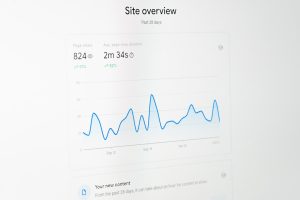
In today’s dynamic software development ecosystem, engineering teams are under increasing pressure to deliver high-quality software faster and more efficiently. To meet this demand, many organizations are investing in Platform Engineering, a strategic approach aimed at boosting developer productivity through common tooling, reusable components, and standardized environments. One standout tool in this movement is the Internal Developer Portal (IDP)—a centralized interface designed to provide engineers with everything they need to build, deploy, and operate software effectively.
While the concept of internal developer portals isn’t new, their implementation and adoption can vary widely across organizations. For a portal to offer real value and “stick,” it must be more than just a dashboard. A successful IDP should empower developers with autonomy, reduce cognitive load, and embed itself into daily workflows. In this article, we explore what makes an internal developer portal successful and how platform engineering teams can build solutions that become indispensable to developers across the enterprise.
The Rise of Internal Developer Portals
The shift from monolithic applications to distributed, cloud-native architecture means developers must interact with a growing number of tools and environments—Kubernetes clusters, CI/CD pipelines, observability systems, cloud APIs, and more. This complexity translates into inefficiency and frustration.
Internal developer portals aim to solve these issues by providing a unified, consistent interface to discover and manage APIs, services, environments, and infrastructure. Think of them as central nerves of engineering productivity.

The reasons for adopting IDPs are manifold:
- Simplified tooling access: Developers no longer need to remember different CLI commands or URLs—they can find everything in one place.
- Standardization: Promotes consistent practices across teams, improving collaboration and maintaining compliance.
- Self-service workflows: Whether provisioning environments or deploying services, portals allow devs to do more autonomously.
- Audit and governance: Centralized visibility into what’s running and who owns it enables better control and security.
What Makes a Developer Portal “Stick”?
Many organizations launch developer portals with great ambitions, only to see them fade into obscurity. Why? Because they often become yet another tool that teams must learn and maintain. To ensure long-term adoption and value, here are the key characteristics of sticky and effective internal developer portals:
1. Align with Developer Workflows
An IDP should not be a separate destination that developers are forced to visit. It should align with how developers already work. Integrating directly with IDEs, Git repositories, and messaging apps (like Slack or Microsoft Teams) ensures that the portal becomes a natural part of the development lifecycle.
2. Focus on the Developer Experience (DX)
Developer Experience is at the heart of effective platform engineering. Portals that prioritize fast loading times, simple navigation, and clear documentation make it easier for engineers to adopt and rely on the tool daily. Frictionless UX ensures that developers spend less time context-switching and more time building.
3. Provide Real Self-Service Capabilities
True empowerment comes from enabling developers to take action without waiting on Ops or other teams. Sticky portals must offer self-service options such as:
- Provisioning a new Kubernetes namespace
- Spinning up ephemeral test environments
- Deploying a microservice to staging or production
- Requesting feature flags or database access
These capabilities not only improve speed but also reduce cross-team dependencies.
4. Offer Valuable Observability and Insights
Access to logs, metrics, and tracing data through a unified portal means developers can diagnose and fix issues faster. Integration with popular observability tools such as Datadog, Grafana, and OpenTelemetry provides a comprehensive view of application health and performance.
5. Evolve with the Organization
A fixed, rigid portal quickly becomes outdated in fast-moving environments. The best IDPs are modular and extensible—capable of adapting to new tools, processes, and team structures. Platforms like Backstage, built by Spotify, offer plugin architectures that support dynamic capabilities as engineering needs evolve.

Building an Internal Developer Portal
Building a flexible and impactful IDP is not a small undertaking. It requires close collaboration between platform teams, developers, security, and other stakeholders. Here’s a phased approach that can help teams succeed:
1. Discover Developer Pain Points
Effective portals solve real problems. Spend time identifying friction in the developer workflow—manual provisioning steps, scattered documentation, or redundant approval chains are all common culprits. Developer interviews and journey mapping can illuminate what needs fixing.
2. Start Small, Then Iterate
Launch with a minimal set of use cases that provide tangible value. For instance, start with a service catalog and basic CI/CD integrations. Gather feedback and expand gradually. Agile, iterative development ensures that the portal stays relevant and usable.
3. Prioritize Integration Over Reinvention
Rather than building every feature from scratch, integrate with proven tools and platforms your teams already rely on. Systems like GitHub, Azure DevOps, Kubernetes, and ServiceNow can all be connected via APIs and SDKs, saving time and leveraging existing investments.
4. Make it Discoverable and Well-Documented
A robust IDP should be intuitive, but great documentation ensures developers can make the most of its capabilities. Invest in tutorials, tooltips, video walk-throughs, and searchable guides. Consider internal onboarding programs for new developers to learn how the portal enhances their day-to-day work.
5. Measure and Adapt
Monitor how the portal is being used. Which features have high adoption? Where are users getting stuck? Usage analytics, surveys, and feedback loops offer critical insights that help prioritize improvements. Set goals like reducing time-to-deploy or the number of support tickets, and track KPIs accordingly.
The Role of Platform Teams
Platform engineering teams play a pivotal role in making internal portals successful. These teams should treat developers as customers, with empathy and responsiveness. Rather than enforcing strict mandates, they should build capabilities that solve developers’ pains and provide options—not lock-in.
This requires a shift in mindset from tool-building to product-thinking. Platform engineers must ask: “Would a developer choose to use this if they didn’t have to?”
Popular Tools and Open-Source Projects
Several tools can accelerate the journey toward an effective IDP. Here are a few noteworthy options:
- Backstage (by Spotify): An open-source platform with plugin support, designed to centralize developer tools, documentation, and services.
- Port: A developer portal that enables self-service on top of existing CI/CD and cloud infrastructure.
- Humanitec: An internal developer platform focused on orchestrating deployments and environments frictionlessly.
- Roadie: A hosted Backstage-as-a-Service that simplifies onboarding and maintenance.
Each of these platforms has strengths and limitations. Choosing the right one depends on your organization’s architecture, developer needs, and level of platform engineering maturity.
Challenges and Considerations
Despite the promise of IDPs, there are real challenges to be mindful of:
- Over-engineering: Adding too many features out of the gate can overwhelm developers and slow adoption.
- Resistance to change: Developers may prefer their existing workflows. Change management through advocacy and support is crucial.
- Maintenance burden: Without proper resourcing, portals can become outdated or buggy. Treat it as a critical internal product.
Conclusion
Internal developer portals, when implemented thoughtfully, become critical accelerators of software delivery. However, their success hinges on more than just sleek interfaces; they must align closely with developer needs, provide self-service value, and continually evolve. Platform engineering teams that embrace a customer-centric mindset, focus on integration, and invest in quality user experiences will find their portals not only adopted—but championed.
In a world where engineering velocity differentiates market leaders, platforms that effectively empower developers are no longer optional—they are essential.






